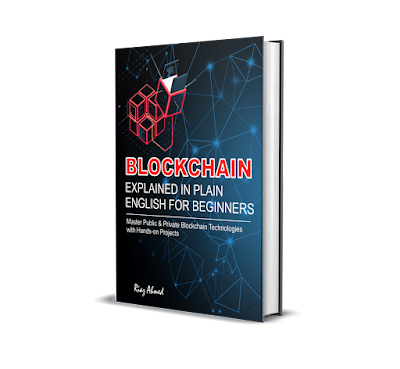We live in the centralized Web 2.0 era, in which large amounts of web data and content are centrally stored on the servers of a small group of companies such as Google, Microsoft, Facebook, Amazon, and Apple. The vision of Web 3.0 is to decentralize the internet to make you the owner of your data and content. The objective of this book is to provide you with conceptual and hands-on exposure to Web 3.0 and its related technologies, such as blockchain, cryptocurrencies, decentralized applications, and more.
The book has two projects that are the essence of this book. The first one, "Health Insurance Claim," demonstrates the creation of a decentralized application (dApp) for the public blockchain using ethers (ETH). You can apply the techniques used in this project to create NFT and other similar projects. The second one is a Hyperledger Fabric project that demonstrates how to create applications for private blockchains that don't involve cryptocurrencies. After reading this book and completing the two projects, not only will you have the conceptual knowledge of Web 3.0, but you will also have a solid foundation to build blockchain applications to enhance your skills even further.
The following list provides the topics covered in this book:
Background of Blockchain and Cryptocurrencies
Here are the topics covered in this section, which starts with the history of money and unveils the scenario that led to the evolution of cryptocurrencies, blockchain, and ultimately Web3.
- History of money and background of cryptocurrencies
- Bitcoin and altcoins
- Centralized, decentralized, and distributed networks
- Web 1.0, Web 2.0, and Web 3.0
- Introduction and history of blockchain
- Blockchain vs. regular database
- Public vs. private blockchain
- Features of blockchain technology
- How does blockchain work?
- Blockchain architectural elements
- Cryptography and hashing
- Mining process overview
- Consensus protocol
- Proof of Work (PoW) & Proof of Stake (PoS)
- Target hash and mining difficulty
- Nonce and cryptographic puzzle
- Mining reward, Bitcoin halving, and transaction fee
- Cryptocurrencies wallet
- Public and private keys
Learn Solidity Language
Start your Solidity language exploration journey with Remix IDE. To step into the exciting world of Smart Contract development, it is recommended that beginners start their exploration journey with Remix. The Remix IDE is a powerful, open-source tool that helps you write Solidity contracts straight from the browser. Written in JavaScript, Remix supports both usage in the browser and locally. Remix also supports testing, debugging, deploying smart contracts, and much more. Remix is used for the entire journey of contract development as well as being a playground for learning and teaching Ethereum.
- State and local variables in Solidity language
- View and pure
- Constructor
- Arrays (dynamic sized and byte array)
- For, While, and Do-While loops
- IF condition
- Struct
- Mapping
- Storage vs. Memory
- Payable - send and receive funds
- Visibility
- Inheritance
Public Blockchain - Ethereum
After grasping the basics of Solidity, you are taken to the next level where you create a small project to apply the skills you learned in the Solidity language section. You create a healthcare insurance dApp (decentralized application) project in which patients upload their claims to the blockchain for quick settlements in ethers (ETH - the currency used on the Ethereum platform). The project is created with the help of Hardhat and React. Hardhat is an Ethereum development environment. It helps you compile your smart contracts and run them on a development network. React is a free and open-source front-end JavaScript library for building user interfaces based on UI components.
- Project installation procedure
- Run Hardhat Network
- Install MetaMask
- Set up IPFS gateway to store application images (i.e., patients' medical bills)
- Deploy smart contract
- Run and test the application
Private Blockchain - Hyperledger Fabric
Hyperledger's projects include a variety of enterprise-ready permissioned blockchain platforms, where network participants are known to one another and therefore have an intrinsic interest in participating in the consensus-making process. It does not support a cryptocurrency like Bitcoin. Its aim is to provide the necessary infrastructure and standards for developing various blockchain-based systems and applications for industrial use. First, you will learn about the components that make up Hyperledger Fabric. Then, you create a project to manage assets and track the ownership and history of those assets. This project is created using the Hyperledger Fabric test network and its front end is developed in Express JS. Express is a Node.js web application framework that provides broad features for developing web and mobile applications.
- Hyperledger Fabric components - Assets
- Shared Ledger
- Chaincode
- Channel
- Organization
- Nodes
- Clients
- Endorsing peer
- Committing, Anchor, and Leading peers
- Ordering service (Orderer node)
- Membership Service Provider and Certificate Authority
- Hyperledger Fabric network
- Transaction flow
- Asset Transfer - Hyperledger Fabric blockchain project
- Set up the project environment
- Install Windows Subsystem for Linux (WSL)
- Fabric Sample Repository & Docker Images
- Front-end application (Manage assets on the blockchain and track asset history)
- Glossary






